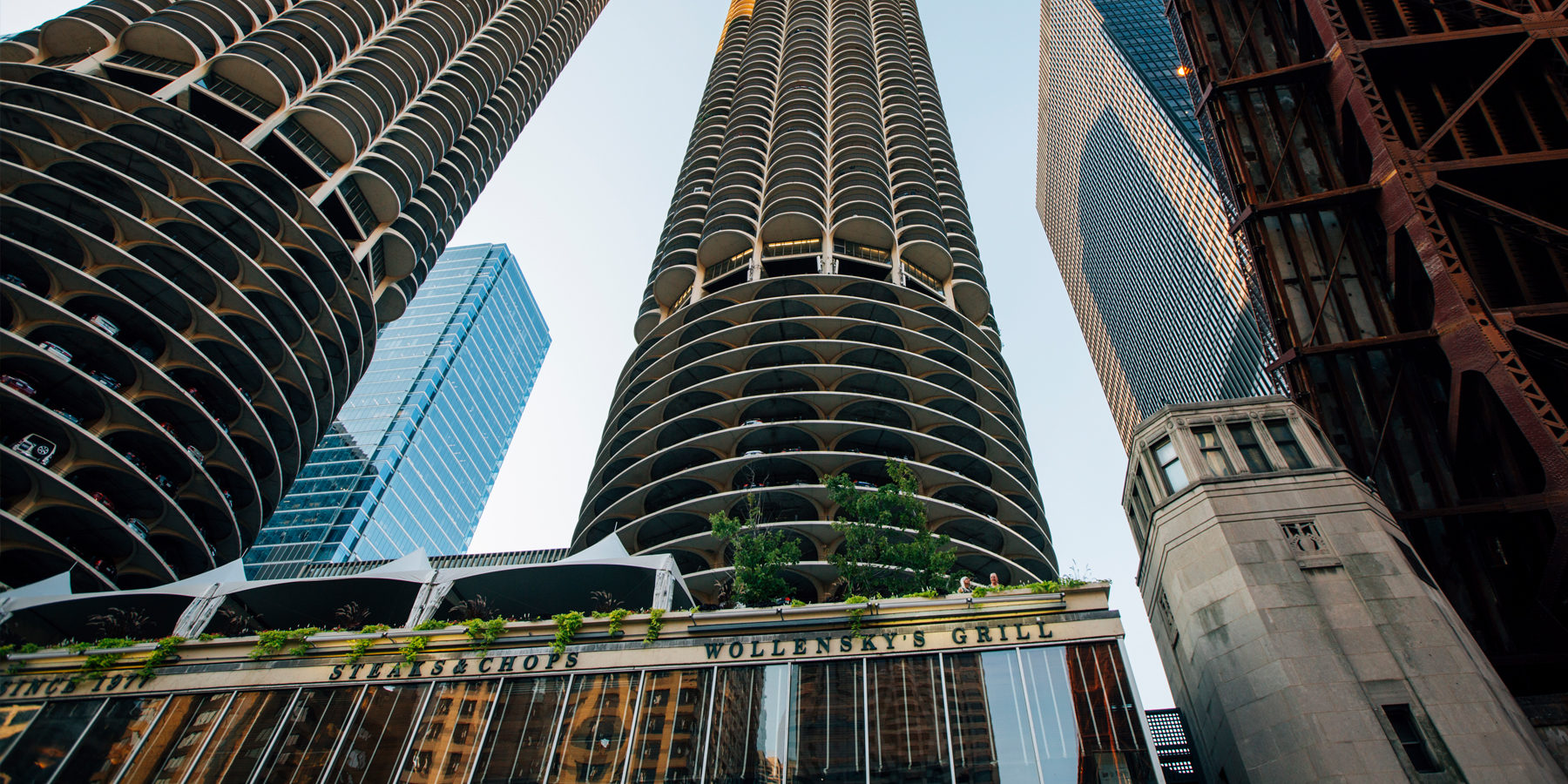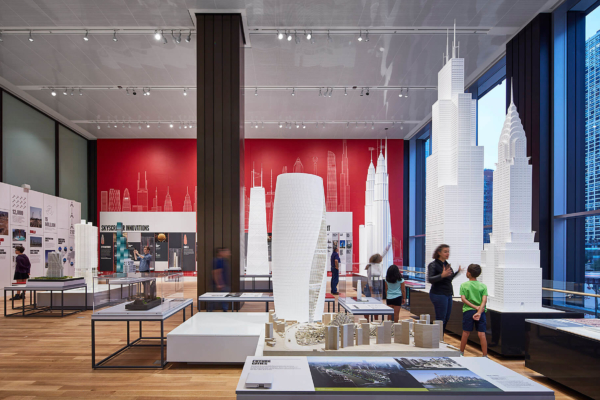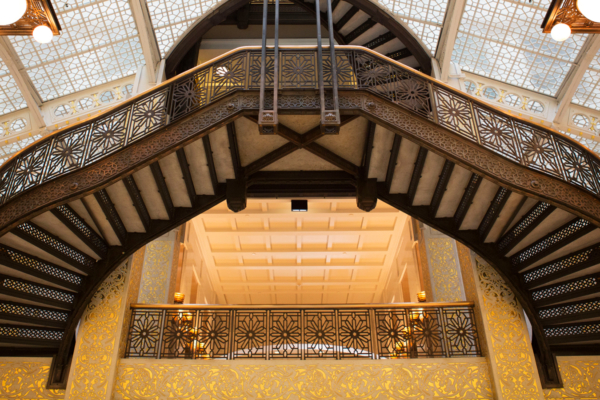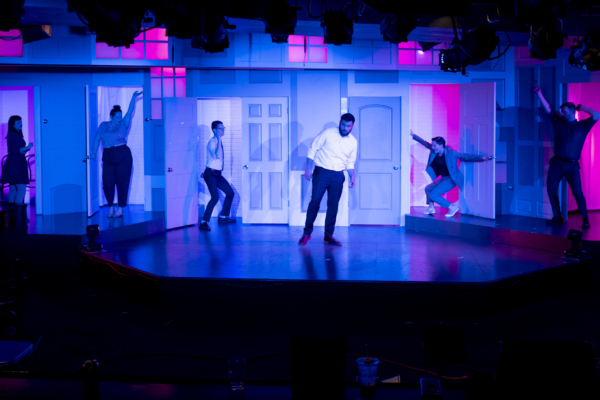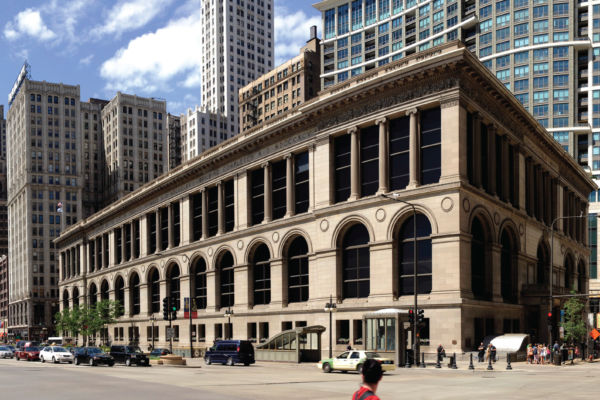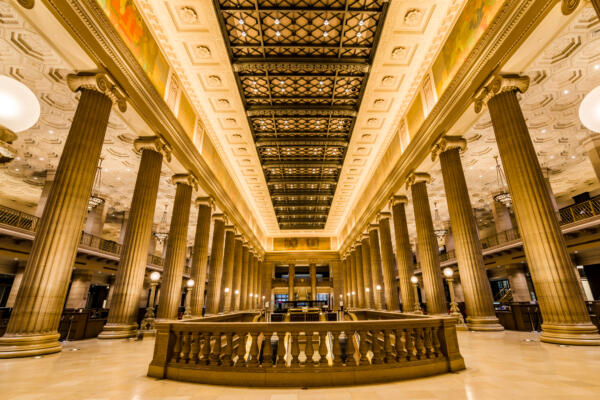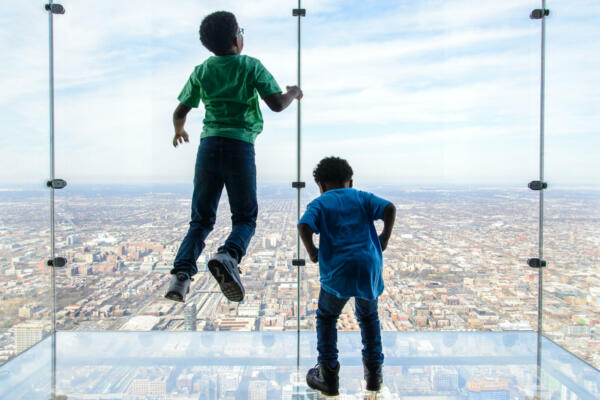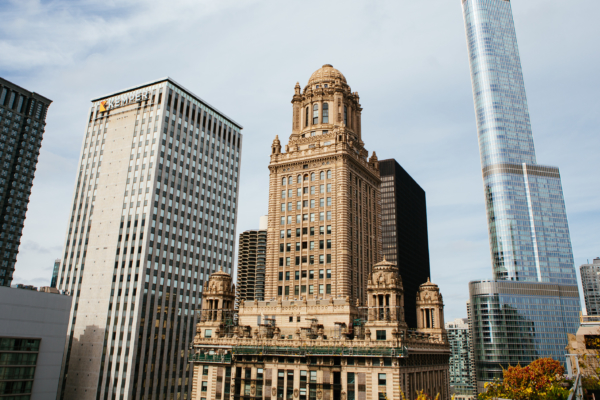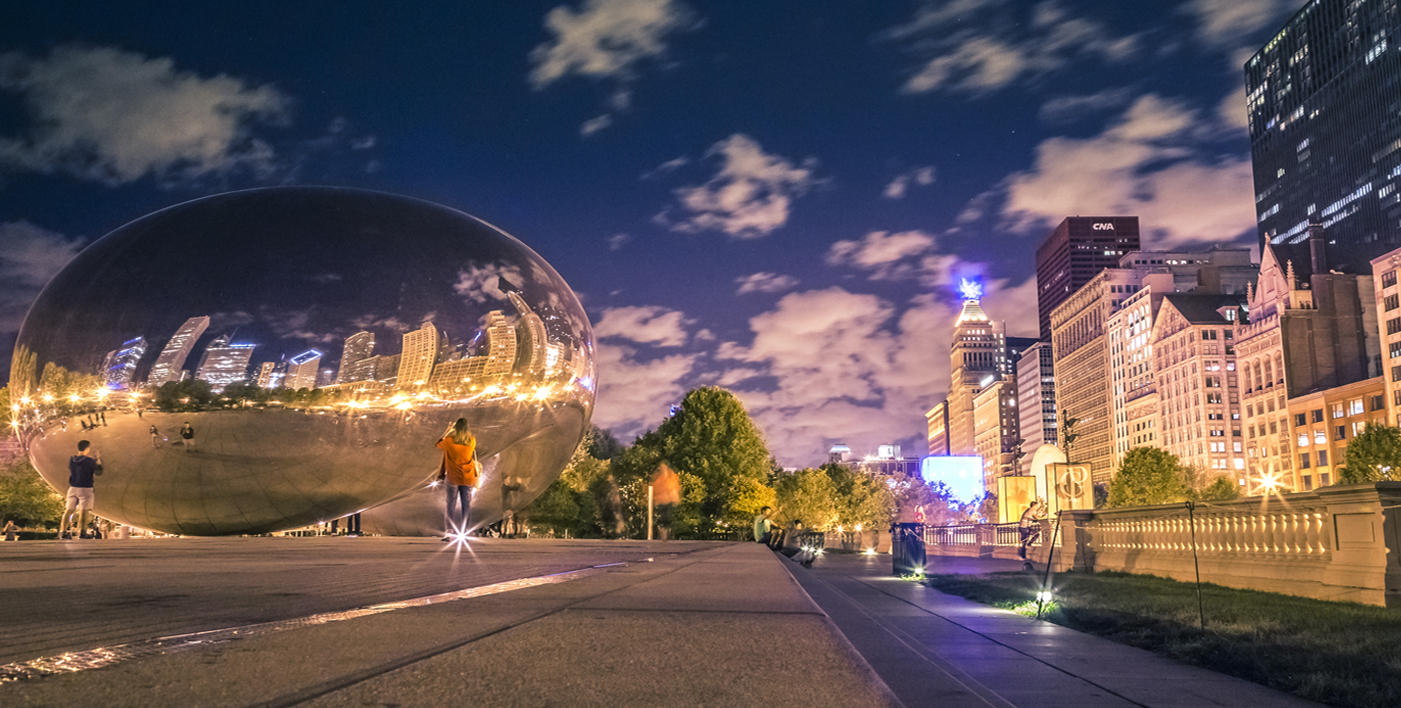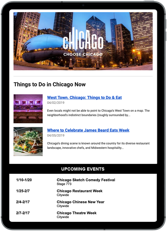Chicago’s is full of truly unique architectural wonders. Use the guide to build your own Chicago architecture itinerary, from the iconic buildings in the Loop to Frank Lloyd Wright masterpieces in our neighborhoods. Or go the easy route and let the pros lead you on an architectural tour. Either way, you’re in for packed day of breathtaking buildings and one-of-a-kind gems.
Architecture in the Loop
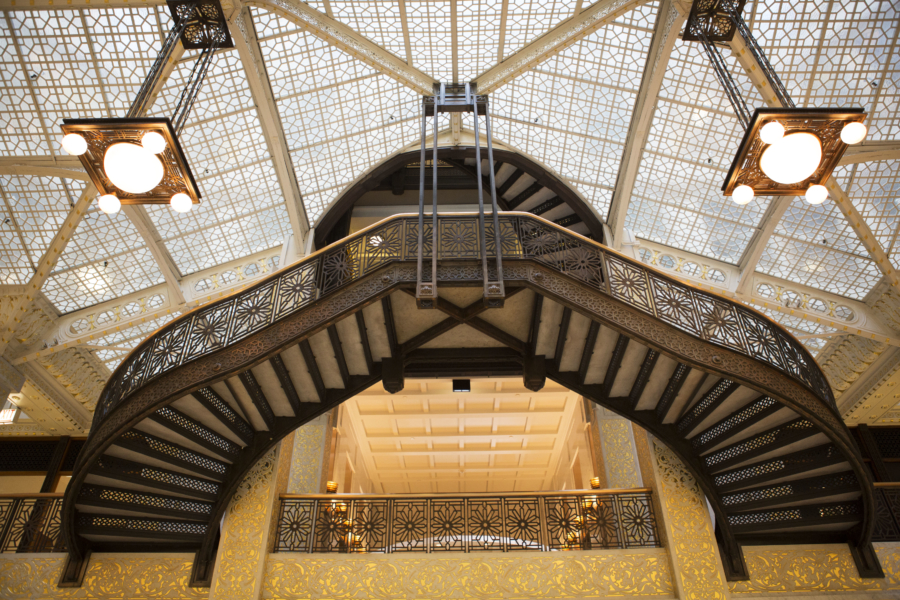
Willis Tower
An architectural achievement, the skyscraper designed by the renowned firm Skidmore, Owings & Merrill rises to a height to 1,450 feet. See breathtaking, 360-degree views of Chicago from one of the Western Hemisphere’s tallest buildings on its observatory Skydeck Chicago and experience The Ledge. 233 S. Wacker Dr.
Rookery Building
On the National Register of Historic Places and a Chicago Landmark, the picturesque Rookery was designed by famed architectural partners Burnham and Root. Built during a transition period in architectural construction, it uses both load-bearing masonry and steel frame elements of the Chicago School of Architecture. Frank Lloyd Wright redesigned the two-story skylight lobby in 1905 – 1907. 209 S. LaSalle St.
Monadnock Block
The last of the great masonry skyscrapers, the Monadnock‘s solid block form conveys strength and sturdiness, though it is actually comprised of two narrow, connected office towers. Its architects Burnham & Root insisted on vertical simplicity and it is famed for its absence of ornamentation. The south addition is an early example of steel-frame construction. A harmonious combination, they mark the end of one architectural tradition and the transition into a new one. 53 W. Jackson Blvd.
Aqua Tower
Located near the shores of Lake Michigan, this water-inspired tower is no standard skyscraper — it’s more like outdoor sculpture. This shimmering multi-use high rise by “genius grant” MacArthur Fellowship winner Jeanne Gang connects strongly to the outdoors and the city, with outdoor terraces that give it its distinctive undulating appearance. 225 N. Columbus Dr.
Architecture near The Magnificent Mile

875 N. Michigan Ave. (formerly the John Hancock Center)
One of the most iconic buildings of the city’s skyline, 875 N. Michigan Ave.— with its gutsy design in the tradition of industrial Chicago — offers a stunning view 1,000 feet up from the award-winning 360 CHICAGO (formerly the John Hancock Observatory). Additionally, The Signature Room at the 95th and The Signature Lounge at the 96th both offer terrific views of the city while you enjoy food and drinks. 875 N. Michigan Ave.
Wrigley Building
For over 75 years, the Wrigley Building has been recognized as one of Chicago’s most attractive buildings. Its dazzling white terra-cotta cladding, striking architecture, and nighttime lighting have established it as a symbol of Chicago in many books, films, and television programs. This splendid building is an unforgettable site, day or night. 400 N. Michigan Ave.
Tribune Tower
A Chicago Tribune competition in 1922 spurred a flood of international entries all vying to create “the most beautiful and distinctive office building in the world” for the newspaper’s new headquarters. The design by the New York firm Howells and Hood was selected out of over 250 concepts and today their Neo-Gothic limestone tower — complete with elegant buttresses, beautifully carved stonework, and an octagonal campanile — forms a grand gateway to The Magnificent Mile. 435 N. Michigan Ave.
Historic Water Tower
This diminutive limestone tower stands proud in a cityscape of sleek glass and steel architecture. As one of the few buildings to survive 1871 Great Chicago Fire, it is a beloved symbol of Chicago’s enduring spirit. Resembling a miniature medieval castle, the Gothic-style structure was built in 1869 by William W. Boyington and is part of the Old Chicago Water Tower District, which includes the Chicago Avenue Pumping Station and a Fire Station built in 1904. 806 N. Michigan Ave.
Architecture in River North
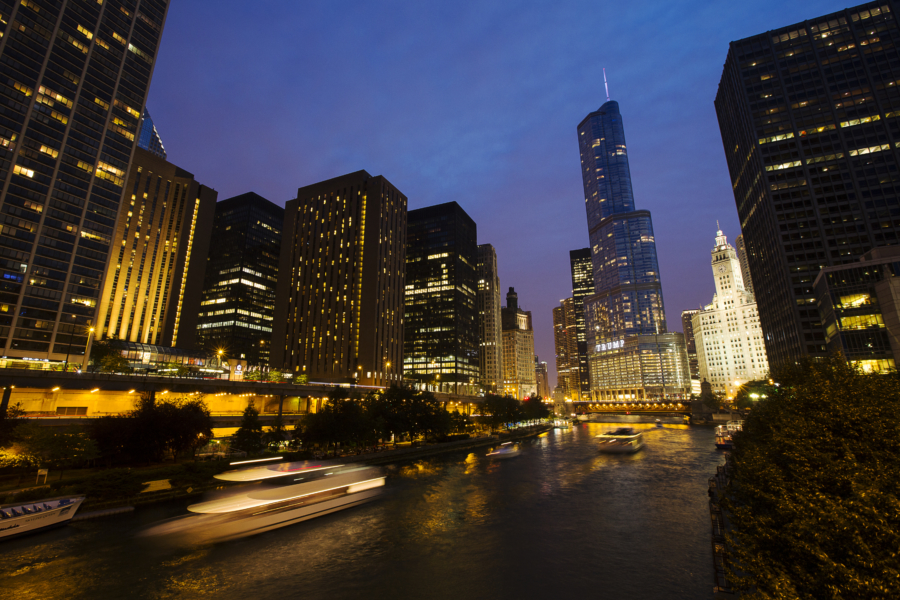
Marina City
Designed by the great Chicago architect Bertrand Goldberg, these riverside twin “corn cobs” fascinated Chicago and the world when it opened in 1962. At that time, the mixed-used complex was the tallest residential building and tallest concrete structure in the world. 300 N. State St.
Trump Tower Chicago
The 92-story condo/hotel tower is Chicago’s second-tallest building, with a height of 1,398 feet including its needle-like spire, and was designed by acclaimed firm Skidmore, Owings & Merrill (who also brought Chicago the Inland Steel Building, Willis Tower, and the 875 N. Michigan Ave.). The gleaming glass, steel, and concrete structure rises prominently from its base at an oblique angle along the Chicago River’s curve, though a series of three setbacks that are level with the height of its surrounding neighbors and provide visual context within the skyline. 401 N. Wabash Ave.
330 N. Wabash (aka IBM Plaza and AMA Plaza)
Developed by a master of the modernist movement, Ludwig Mies van der Rohe, this straightforward, rectangular monolith was the last American office building he designed. Steel and glass combine in shades of black and gray to form an archetypal example of the “Miesian” skyscraper and his aesthetic: minimalist, exact, symmetrical, functional…an ethos famously summed down to “less is more.” 330 N. Wabash
theMART
Encompassing 4.2 million square feet, theMART is the world’s largest commercial building, largest wholesale design center, and one of Chicago’s premier international business locations. The massive space hosts many trade shows and events, and public areas include the Luxe Home kitchen and bath showrooms, retail shops, and The Chopping Block, a local cooking school offering classes for individuals and groups. And in the evenings from March through December, the landmark building’s facade lights up with Art on theMART. 222 N. Merchandise Mart Plaza
Frank Lloyd Wright architecture in Chicago & Oak Park
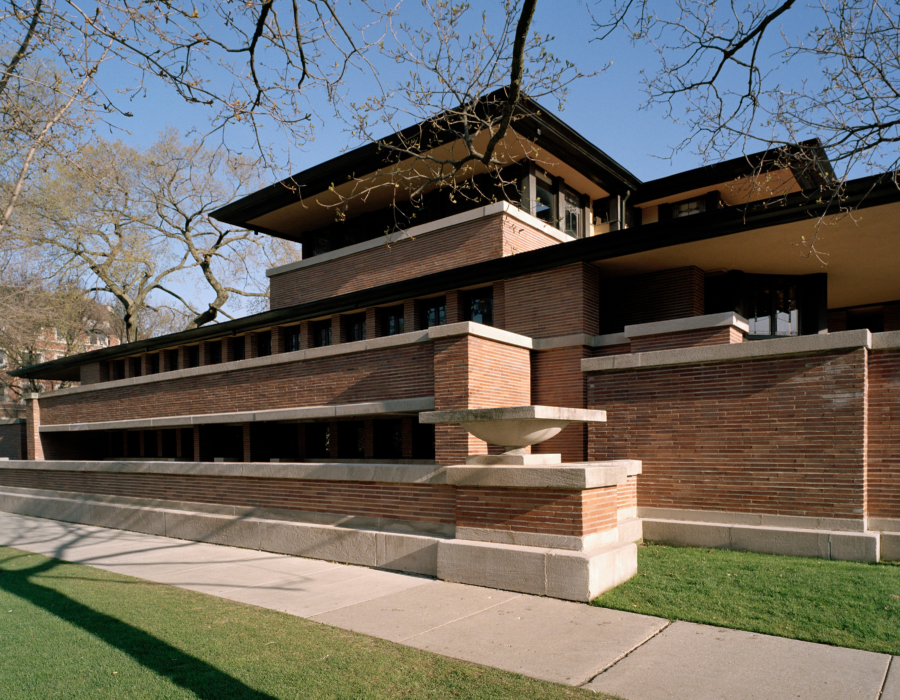
Robie House
This landmark residence is a masterpiece of the Prairie style and an icon of modern architecture. Always conscious of the relationship between light and space, his innovative home design features long, low horizontal lines — most notably seen from its signature roof — as well as natural materials, an open floor plan, and a strong connection to its exterior landscape. Considered one of Wright’s greatest works, the Robie House is a UNESCO World Heritage Site. 5757 S. Woodlawn Ave.
Frank Lloyd Wright Home and Studio
The great 20th century architect’s personal residence and workplace during the first 20 years of his career was his architectural laboratory and is considered his first masterpiece. Here in Oak Park, Illinois, he and his associates developed a new American architecture, the Prairie style. 951 Chicago Ave., Oak Park, IL
Unity Temple
One of Wright’s most significant early works, his first — and perhaps greatest — public commission is a study of space, volume, and light. An unadorned concrete exterior contrasts against the open and airy inner chamber. Inside the “jewel box,” as he called it, a sense of movement is always at the forefront, flowing from the angles and corners of the square ground plan. The temple was added to UNESCO’s World Heritage List in 2019. 875 Lake St., Oak Park, IL
Sightseeing tours

What better place to start than on a Chicago Architecture Center tour? With 85 walking, bus, and boat tours available, you have plenty of choices. You should definitely try to catch their popular River Cruise boat tours on Chicago’s First Lady during the summer season — the official boat tour company for the Chicago Architecture Center.
Other skyline tours by boat can be had aboard Chicago Line Cruises, Shoreline Sightseeing, Entertainment Cruises – A Hornblower Experience, and Wendella Sightseeing Boats. All offer great views and great stories of Chicago’s iconic skyscrapers.
Of course, you can see the sights on foot as well. Explore top highlights and off-the-beaten-path gems from inside and out with Chicago Detours. Highly-trained guides will spark your imagination using iPads loaded with archival images like maps, historic photos, and documentary video clips.
Get up close and personal to the city’s architectural gems with Inside Chicago Walking Tours. Rather than just look at the facade of the great buildings, your guide will have you touching century-old walls, lead you through grand train stations, and take you back in time with lobbies that evoke the Roaring 1920s.
Finally, for a more economical choice with no upfront cost where you pay-what-you-like, if anything, after the tour is over, try Free Tours by Foot. Or go your own pace with free, self-guided tours right on your smartphone with MetroWalkz Self-Guided Walking Tours.
Want to explore architecture in Chicago’s neighborhoods? Check out our guide to local historic districts.
Please note: some of the above tours are available seasonally and are weather dependent. Please check with each tour company for availability.

